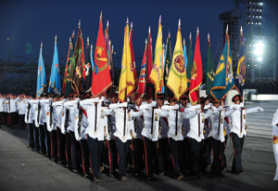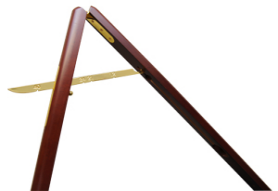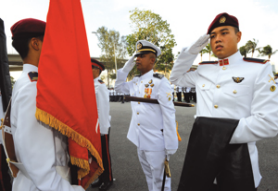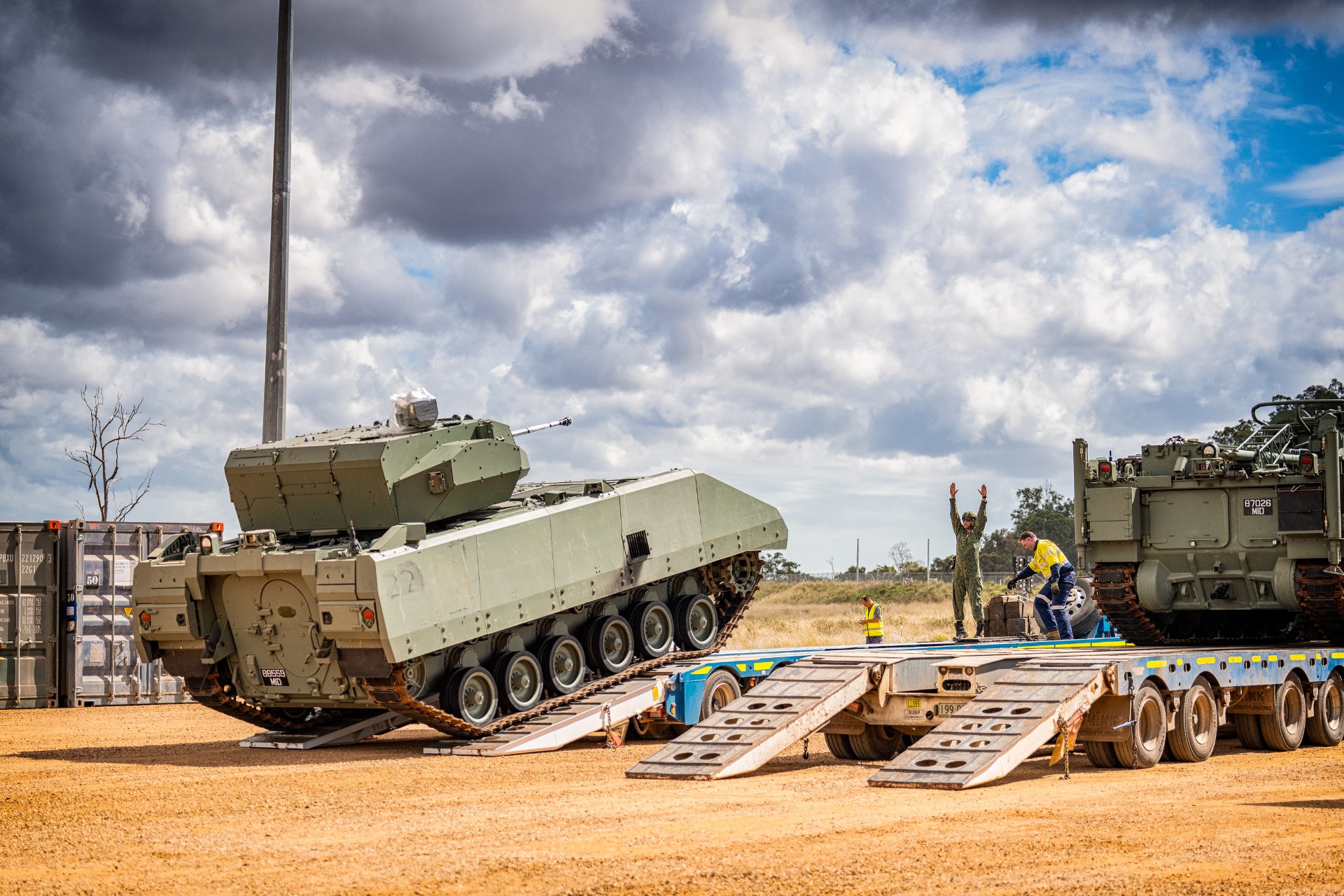OPS & TRAINING
THE MILITARY WAY
22 Jun 2010
june-2010-issue

Customs and traditions of the Singapore Armed Forces (SAF), such as salutes and parades, are more than mere symbols and PIONEER sets out to demystify some of the more common practices.
As a relatively young military organisation, some of the customs and traditions practised by the SAF can be traced back to Singapore's colonial years and to practices shared by military forces around the world.
Even though some of the SAF's practices are borrowed, the values they represent are clear. Apart from fostering a common bond within the military community, they are powerful representations of the discipline and bearing of those who serve in the military. "Customs and traditions are the very elements of the military profession that distinguish us from other organisations," said Senior Warrant Officer Jeffrey Chung, SAF Sergeant Major.
What are Military Colours?
Military regiments began carrying coloured flags to identify themselves on the battlefield from around the 1600s. These highly-visible flags also served as a rallying point for troops. Where the Colours stood was often the scene of the most bitter fighting, as capturing the other side's Colours was symbolic of striking at the heart of the unit. Thus the most senior and bravest sergeants were chosen to protect the flag bearer who was usually the most junior officer. Today, the Colours have evolved to simply represent a unit's prestige and honour. They help to foster a sense of pride and loyalty towards the SAF and are frequently paraded at auspicious and significant occasions such as the National Day Parade, where they are accorded the highest honour and respect. For example, military personnel are expected to stand and salute as the Colours pass their immediate front.
The Colours are fashioned by hand from the finest silks, in accordance with their importance and solemnity. There are strict protocols governing the consecration, transportation and retirement of Colours. With care, each Colour has a lifespan of 15 to 20 years.
What's in a "Commissioning Pennant"?
The Commissioning Pennant is the mark of a Navy ship in active service. It is first flown on the main mast when the ship is commissioned and taken down when it is decommissioned. Singapore's pennant is a red longitudinal stripe that bears the country's crescent moon and five stars and it is flown at all times as long as a ship is in commissioned (active) status. As professional navies began to take form in the late 1600s and the need to distinguish their ships from merchant ships at a distance arose, navies adopted long narrow flags to be flown by their ships on the main masthead. Early flags and pennants were very large, so as to be easily visible. By 1870, the largest pennant on record measured 21.3m long. Over time, the flying of flags and pennants became standard naval practice. Even as warships took on distinctive forms and could no longer be mistaken for merchant ships, flags and pennants continued to be flown, but shrunk to a fraction of their earlier size.
How do you salute at sea?
Warships at sea salute each other for the same reasons military personnel do on land. First, a call to attention is sounded on the junior ship, notifying all crew on the upper deck to face the senior ship. Then the call to be "Still" is piped using a high-pitched whistle note played on the Boatswain's call for 8 seconds. This brings the ship to attention while the bridge team pay their compliments to the senior ship. The "Carry On" call, a 2-second whistle comprising a high and a low note is then piped. The crews of both ships usually wave to one another as a friendly gesture at this juncture. As a sign of respect, merchant ships also salute passing warships by dipping their national flags.
Why salute?
Saluting is one of the most common and basic forms of military courtesy. The practice may be traced back to medieval knights who lifted their helmet visors when encountering others, to confirm if the other is friend or foe. Another explanation says that travellers often approached each other with their sword arm - usually the right arm - in plain sight and with open palms to signal that they had no ill intentions. In short, the military salute is a sign of mutual trust and confidence. In practice, salutes are accorded by a junior service personnel to an officer who is senior in rank.
What is a pace-stick?
Those who have been through National Service will attest to the feeling of fear and awe at the sight of a Parade Sergeant Major (PSM) with his pace-stick on the parade square. The modern pace-stick is an adaptation of a similar item used by the Royal Regiment of Artillery in Britain. It was originally used by gunners to ensure correct distances between guns on the battlefield, to ensure effective fire. Today, it is the symbol of the PSM's authority as a master of drill, parade and ceremony. It is also used as a tool to measure, among other things, the distance taken in a single marching step.
ALSO READ IN OPS & TRAINING
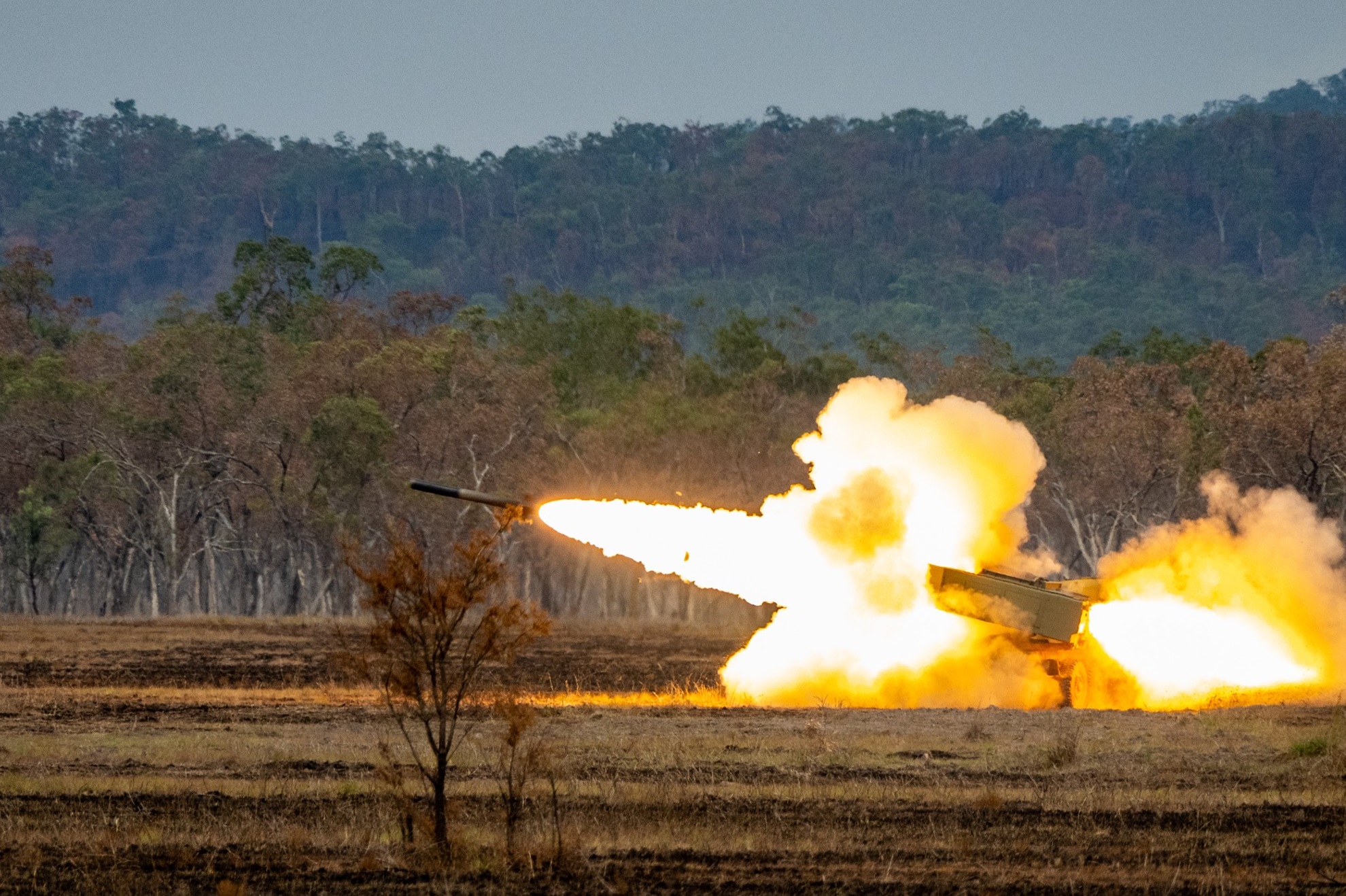
Exercise Wallaby 2025: To see better, shoot faster
31 Oct 2025
The SAF focuses on complex strike missions and multi-domain integration in Exercise Wallaby 2025, the 35th edition of its largest unilateral overseas exercise.

Ex Wallaby 25 – Greater Integration and Complexity
25 Oct 2025
The 35th edition of the SAF’s largest unilateral overseas exercise is an opportunity for expanded scale and deeper integration towards an effective, networked fighting force.

Ex Forging Sabre ramps up use of unmanned assets in integrated strike operations
12 Sep 2025
In this 10th edition of Exercise Forging Sabre, the SAF sharpened its cutting edge for the dynamic modern battlefield, with expanded integration between manned and unmanned platforms.

